Compiled by Sally Meyer, Nick Powers, and Sam Scalph
The Museum of the Shenandoah Valley is a site grounded in gay history. Over decades starting in the 1950s, MSV founder Julian Wood Glass Jr. and his partner R. Lee Taylor built a queer landscape at Glen Burnie. This landscape functioned both as a home set against a beautiful backdrop of cultivated gardens and as a physical barrier to safeguard their romantic relationship from unfriendly gazes.
However, Glass and Taylor’s story is just one marker in a long narrative of LGBTQ+ history in the Shenandoah Valley. This timeline is among the first of its kind: an attempt to document centuries worth of LGBTQ+ experience in this region. Reflected in its entries are landmark individuals and communities as well as specific events in the Commonwealth and in the Valley that impacted the lives of LGBTQ+ people. Sprinkled throughout are references to the MSV’s own institutional history and its continuing efforts to understand and interpret the queer history of our site.
This timeline is also a living document. It will be updated over time with the stories of people whose histories have been overlooked as well as purposefully erased from the documentary record. Largely missing from this timeline at its first publishing in June 2023 are stories of trans people and queer people of color in and from the Valley. You can help us to grow and continue the timeline to better reflect the Valley’s historic and contemporary LGBTQ+ community. If you are interested in submitting information to the timeline, please contact Curator of Collections Nick Powers (he/him) at npowers@themsv.org and/or Adult Programs Manager Sam Scalph (she/they) at sscalph@themsv.org.[i]
A Note on Terminology and Language
Terms used to describe sexuality and gender identity change over time. Modern terms like lesbian, gay, bisexual, transgender, and queer are relatively recent inventions. Few records survive revealing how historical figures described their sexuality or gender. This timeline contextualizes people in the era in which they lived, using their own words whenever possible.
Pre-European Contact–early 1700s
Indigenous peoples integrate gender fluid individuals—who often performed important ceremonial roles—into their kinship structures. Today, many such people identify with the pan-Indian term “Two Spirit,” someone who embodies both male and female gender roles. Modern historians and tribal members alike actively work to reconstruct the histories of gender fluid people in indigenous communities, like the Iroquoian language speakers who frequented the Shenandoah Valley prior to colonization by Europeans and free and enslaved Africans during the 1700s.[ii]
1610
On behalf of the Virginia Company, colonial officials in Jamestown adopt and implement the Lawes Divine, Morall and Martiall, the earliest extant English-language body of laws in the western hemisphere. The regulations establish death as the punishment for sodomy between two men. Other crimes punishable by death include blasphemy, murder, robbery, uttering treasonous words critical of the Virginia Company, cheating the company, trading with Indians or sailors, and sending goods out of the colony without permission. Government under the Lawes Divine, Morall and Martiall ceases with the arrival of deputy governor Sir George Yardley in Jamestown in 1619. However, anti-sodomy laws in Virginia continue for nearly the next 400 years.[iii]
1779
In a move seen as “liberal” at the time, Thomas Jefferson proposes Bill 64 to reduce the penalty for sodomy from death to castration for men and maiming for women as part of a larger effort to reduce capital punishment crimes. It loses by one vote, according to James Madison, due to the hatred of horse thieves who were included in the bill’s efforts to reduce capital crimes.[iv]
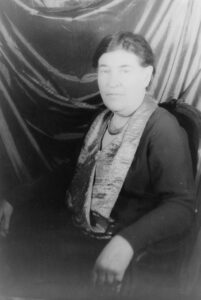
December 7, 1873
Author Willa Cather (1873–1947) is born in Back Creek, Frederick County, Virginia. Believed by many scholars to have been a lesbian, Cather achieved national recognition for her novels of American life including O Pioneers! (1913), The Song of the Lark (1915), and My Ántonia (1918). The setting of her final novel, Sapphira and the Slave Girl (1940), takes place in the Back Creek community where she grew up. It is one of the first of its kind to include enslaved individuals as thoughtful, primary characters rather than literary props.
1884
Lawrence Register Payne (1847–1926) successfully petitions the Frederick County court to legally change his name from the one given at birth: Lydia Rebecca Payne. One of eight children born to Joseph E. and Sarah Payne, Payne and sibling Lelia (1858–after 1920) were born intersex (derogatorily referred to in their era as hermaphroditism). Following their father’s death, Lawrence took over operation of the family farm near the Frederick County, Virginia—Berkeley County, West Virginia border.
In early 1884, Lawrence requested a license to marry family friend and boarder Sarah M. Hinton (1840–1925). Upon being denied due to sex, the couple married in Berkeley County, West Virginia and petitioned to change Payne’s name in Frederick County court. An examination by Dr. William McGuire determined that “the applicant is of the male sex and that…his motion…that his present name of Lydia Rebecca Payne be changed formal [sic] of Lawrence Register Payne — which shall henceforth be his lawful name.” The 1900 United States Census identifies Payne working as a male trader in livestock living with wife Sarah M. Payne and adopted daughter Mable Roberts. Payne’s sister Lelia Payne continued to live as a woman until her death in Maryland sometime after 1920.[v]
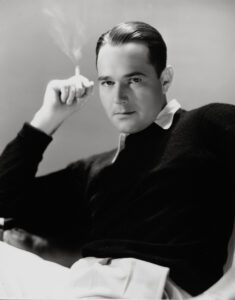
January 2, 1900
Actor and interior designer (Charles) William Haines (1900–1973) is born in Staunton, Virginia. One of five siblings to live to adulthood, Haines was openly gay for the majority of his life. At fourteen, he ran away from home to Richmond and later Hopewell, Virginia, with a young man he identified to his family as his “boyfriend.” After a brief stay in the burgeoning gay community in New York City, Haines began an acting career in Hollywood in the 1920s. His short career ended, though, when studio executives forced him to choose between a sham “lavender” marriage and staying with his partner Jimmie Shields (with whom he remained committed for 47 years). Haines subsequently opened a midcentury modern interior design firm, which completed commissions such as the Sunnylands estate in Rancho Mirage, California.[vi]
June 3, 1902
Artist and illustrator George Quaintance (1902–1957) is born near Alma, Page County, Virginia. Trained at the Art Students League in New York and a pioneer in the gay art movement, Quaintance is known for his homoerotic artwork that frequently appeared on the cover of 20th-century physique magazines. His work later influenced other homoerotic artists such as Tom of Finland. Quaintance was also an acclaimed hairdresser for Hollywood stars including Mae West and Hedy Lamarr.[vii]
1925
Ruth’s Tea Room opens in Winchester, Virginia under the ownership of its founder, Ruth E. P. Jackson (1896–1953). African American owned-and-operated during the era of segregation, the Tea Room was a safe haven for people of all races and backgrounds. The Tea Room appears in multiple editions of the International Guild Guide, first published in Washington, DC in 1964. Like the better-known Negro Motorist Green Book—which helped African American motorists safely navigate the Jim Crow South—the Guild Guide provided a list of restaurants, bars, clothing stores, and other establishments friendly to (or at least tolerant of) gay customers. Patrons who frequented the Tea Room starting in the 1960s recall cabarets that took place there with some frequency.
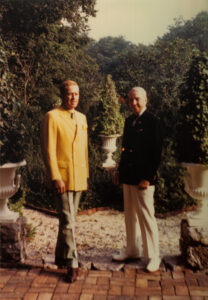
1950s
MSV benefactor Julian Wood Glass Jr. (1910–1992) and his partner R. Lee Taylor (1924–2000) begin the renovation of Glen Burnie, the home of Glass’s ancestors Robert Wood and Comfort Welsh Wood. Glass and Taylor subsequently transformed the site into a showplace surrounded by six acres of formal gardens. Their relationship dissolved in the 1970s, but the two men continued to entertain together and remained close friends until Glass’s death.
1975
Virginia outlaws same-sex marriage by appending a ban to the Commonwealth’s statutory code.
1977
Free Alliance for Individual Rights (FAIR) is founded in Roanoke, Virginia. FAIR formed as an LGBTQ civil rights organization in response to police stings targeting gay men in Roanoke adult bookstores, the City Market, and Elmwood Park.[viii]
April 19, 1983
Volume 1 of the Blue Ridge Lambda Press is published on April 19, 1983. This is the first issue of the BRLP, which is Southwest Virginia’s longest-running LGBTQ publication (1983–2008). The Blue Ridge Lambda Alliance previously published a newsletter from September 1981–January 1982.[ix]
1989
Roanoke Pride in Roanoke, Virginia, is founded. Roanoke, as a larger city with advocacy organizations and LGBTQ-friendly businesses, served as a haven and resource for members of the LGBTQ community living in the southern Valley.
1990s
Prior to his death, Julian Wood Glass Jr. (1910–1992) establishes the Glass-Glen Burnie Foundation to ensure his collection of European, American, and Asian decorative and fine art becomes accessible to the public. The Glen Burnie Historic House and Gardens opens in 1997 with R. Lee Taylor as the museum’s founding curator of gardens. Less than a decade later, the Foundation supports the creation of the Museum of the Shenandoah Valley (MSV), which continues to display and interpret Glass’s collection and interpret his life as a gay man to the present day.
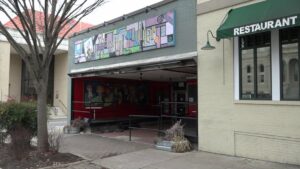
1992
The Artful Dodger on Court Square in Harrisonburg, Virginia, opens. Known for its welcoming atmosphere and regular drag shows, it becomes a haven for the local and student LGBTQ+ community until it permanently closed in February 2019.
May 9, 2000
Death of R. Lee Taylor. Born in Tennessee, Taylor devoted his life to the development and design of the Glen Burnie Gardens. He was also an ardent creator and patron of miniatures and their makers, which are displayed in the Museum of the Shenandoah Valley in a gallery named for him. Upon his death, Taylor was interred in the western wall of the Wood-Glass family cemetery on the Glen Burnie grounds.
March 2003
John David Smith Jr. and his lifelong partner Joerg Arnold Eichmann, who had moved to Winchester the previous year, open Village Square Restaurant. It becomes known as one of Old Town Winchester’s premier restaurants and known as a safe space for everyone.
November 2006
The Commonwealth of Virginia voters approve a constitutional amendment banning same-sex marriage and civil unions in the state.
2007
Pride in the Park is held for the first time in Hillandale Park in Harrisonburg, Virginia. The event would continue until 2012, experience a two-year hiatus, and then move to Court Square in Downtown Harrisonburg.[x]
May 2011
A Washington Post poll finds that 63% of residents from the counties of Loudoun, Prince William, Stafford, Fauquier, Culpeper, Madison, Rappahannock, Clarke, and Frederick, as well as the cities of Manassas, Manassas Park, and Winchester support same-sex marriage, while only 42% of the rest of Virginia support same-sex marriage.[xi]
2012
Christopher Wood founds the LGBT Technology Partnership & Institute, headquartered in Staunton, Virginia. The organization works to “bridge the technology gap for all LGBTQ individuals” and focuses on “advocacy for LGBT individuals and communities as it relates to technology and the policies that govern it.”[xii]
August 2013
Two same-sex couples living in the Shenandoah Valley—Joanne Harris and Jessica Duff of Staunton and Christy Berghoff and Victoria Kidd of Winchester—file a lawsuit in U.S. District Court in Harrisonburg to challenge Virginia’s ban on same-sex marriage. Their lawsuit intersects with another suit filed a month before by a gay couple—Timothy Bostic and Tony London—in Norfolk.
On February 13, 2014, the class action lawsuit concludes with federal judge Arenda L. Wright Allen finding Virginia’s ban on same-sex marriage unconstitutional. That decision is upheld by the 4th Circuit Court of Appeals in Richmond in June. The 4th Circuit decision affects the status of same-sex marriage not only in Virginia, but also other states within its jurisdiction including West Virginia, North Carolina, and South Carolina.
Finally, on October 6, 2014, the U.S. Supreme Court refuses to hear appeals from five states—including Virginia—seeking to keep their same-sex marriage bans in place. The decision effectively legalizes same-sex marriage in the state.
May 17, 2014
In one of the area’s largest Pride-related events prior to the founding of Winchester Pride in 2018, organizers host Pride in the Park CookOUT. In addition to hundreds of participants, this event attracts state-level advocacy organizations from Richmond, candidates from both political parties, and invited speakers who share their experiences as LGBTQ people.[xiii]
October 2014
Virginia issues its first marriage licenses to same-sex couples.
October 9, 2014
Same-sex marriage becomes legal in West Virginia.
2015
The Southwest Virginia LGBTQ+ History Project is founded, a community-based organization dedicated to “bringing to light the struggles and activist efforts of the LGBTQ+ community in Southwest Virginia.”[xiv]
November 2016
Local business owner John David Smith Jr. is elected the first Black openly gay mayor of Winchester, Virginia. Smith won reelection in 2020.[xv]
June 2018
Winchester, Virginia, holds its first Winchester Pride Celebration.
July 2018
Recognizing the “severe lack of resources available in the Shenandoah Valley and Greater Appalachian region for LGBTQ individuals and their families,” Christopher Wood and Emily Sproul found the LGBTQ Center in Staunton, Virginia. The center’s mission is to strengthen the Valley’s LGBTQ+ community through advocacy, education, programming, and safe spaces. In early 2019, the Center established its headquarters in Staunton’s former Masonic Building.
November 2018
Michael A. “Mike” Diaz Jr., a Navy veteran and local business owner, is elected the first openly gay mayor of Stephens City in Frederick County.[xvi]
October 2019
Lexington, Virginia, holds its first LGBTQ Pride Festival.
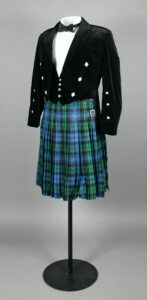
November 2019
The Museum of the Shenandoah Valley establishes the Glen Burnie Queer Studies Collection. This collection encompasses and preserves the everyday, material life objects owned by Julian Wood Glass, Jr. (1910–1992) and R. Lee Taylor (1924–2000) dating to the occupancy of Glen Burnie, including objects that relate to their time as a gay couple. It also contains select objects owned by the group of friends and immediate family that supported them.
January 2020
The Virginia Senate approves four groundbreaking bills protecting LGBTQ rights. These include: Bill 245 (prohibits healthcare providers and/or counselors in Virginia from practicing conversion therapy); Bill 161 (requires school boards to adopt policies to ensure transgender students have equal access to school facilities); Bill 657 (allows transgender Virginians to update their name and sex on their birth certificate); and Bill 17 (repeal’s Virginia’s statutory same-sex marriage ban).
February 2020
The Virginia House of Delegates passes the Virginia Values Act, which grants non-discrimination protections to Virginians based on sexual orientation and gender identity as well as multiple other characteristics. The act makes Virginia the first state in the South to adopt non-discrimination protections for LGBTQ people. In previous sessions of the General Assembly, the measure passed in the Senate but was subsequently blocked in the House of Delegates.
July 1, 2020
The Virginia Values Act takes effect, providing for nondiscrimination protections for LGBTQ people in employment, housing, credit, and public accommodations. The law is the first of its kind in the Southern United States.
2023
The Friendly City Safe Space in Harrisonburg, in coordination with editor Lorraine Dresch and with a foreword by Hyacinth Bellerose, publishes Out in the Valley: LGBTQ+ Stories from the Shenandoah Valley. This volume is the first published collection of personal narratives of LGBTQ+ people in the region.[xvii]
[i] The MSV would like to thank former Adult Programs Manager Sally Meyer, whose early contributions in developing this timeline helped make it what it is today.
[ii] For more information on the historic and contemporary role of gender fluid and Two Spirit people on Indigenous communities and the complexity of researching this topic using primary sources, see Gregory D. Smithers, Reclaiming Two Spirits: Sexuality, Spiritual Renewal, and Sovereignty in Native America (Boston, MA: Beacon Press, 2022) and Gregory D. Smithers, “‘Two Spirits’: Gender, Ritual, and Spirituality in the Native South,” Early American Studies 12, no. 3 (Fall 2014 Special Issue: Beyond the Binary: Critical Approaches to Sex and Gender in Early America), 626-651.
[iii] Brent Tarter, “Lawes Divine, Morall and Martiall,” Encyclopedia Virginia, Virginia Humanities, https://encyclopediavirginia.org/entries/lawes-divine-morall-and-martiall/ (accessed April 21, 2023).
[iv] Gaye Wilson, “Bill 64,” Thomas Jefferson Encyclopedia, https://www.monticello.org/site/research-and-collections/bill-64 (accessed June 21, 2022).
[v] Vince Brooks, “The Mystic Chords of Memory: The Payne Family of Frederick County,” The UncommonWealth: Voices from the Library of Virginia, October 28, 2015, https://uncommonwealth.virginiamemory.com/blog/2015/10/28/the-mystic-chords-of-memory/ (accessed April 21, 2023); Lawrence Register Payne Collection (847 WFCHS), Stewart Bell Jr. Archives, Handley Regional Library, Winchester, Virginia.
[vi] Janice Lyle, Sunnylands: America’s Midcentury Masterpiece (New York, The Vendome Press, 2016).
[vii] Ken Furtado and John Waybright, Quaintance: The Short Life of an American Art Pioneer (Los Gatos, CA: Smashwords, 2014), available online: https://www.smashwords.com/books/view/507108 (accessed June 21, 2022).
[viii] Charter for the Free Alliance for Individual Rights (FAIR), July 11, 1977. Archived by the Southwest Virginia LGBTQ+ History Project, Roanoke, Virginia. Available online: https://www.jstor.org/stable/community.12694459?seq=1 (accessed June 21, 2022); Gregory Samantha Rosenthal, Living Queer History: Remembrance and Belonging in a Southern City (Chapel Hill, NC: The University of North Carolina Press, 2021): 35, 39, 59-60.
[ix] For issues of the Blue Ridge Lambda Alliance archived by the Southwest Virginia LGBTQ+ History Project, see: https://www.jstor.org/site/roanoke/swvalgbtqhistory/ (accessed June 21, 2022).
[x] Monique Calello, “Shenandoah Valley Pride,” The News Leader, July 21, 2015, online: https://www.newsleader.com/story/entertainment/2015/07/21/shenandoah-valley-pride/30457087/ (accessed June 21, 2022).
[xi] Rosalind S. Helderman and Jon Cohen, “Virginians are almost evenly split on gay marriage, Post poll finds,” The Washington Post, May 9, 2011, online: https://www.washingtonpost.com/local/politics/virginians-are-almost-evenly-split-on-gay-marriage-post-poll-finds/2011/05/06/AFFtojcG_story.html (accessed June 21, 2022).
[xii] Mission of the Institute, LGBTQ Technology Partnership & Institute, https://www.lgbttech.org/mission (accessed June 21, 2022).
[xiii] Thank you to Victoria Kidd, LGBTQ+ advocate and owner of the Hideaway Café in Winchester, Virginia, for bringing this event to the authors’ attention.
[xiv] For more on the Southwest LGBTQ+ History Project and their efforts to document queer history and prevent the erasure of queer spaces and places in the Roanoke era, see Gregory Samantha Rosenthal, Living Queer History: Remembrance and Belonging in a Southern City (Chapel Hill, NC: The University of North Carolina Press, 2021).
[xv] Onofrio Castiglia, “Smith makes history with Winchester mayoral win,” The Winchester Star, November 10, 2016, online: https://www.winchesterstar.com/news/winchester/smith-makes-history-with-winchester-mayoral-win/article_e07928cc-8eee-5db3-9166-21955529d849.html (accessed June 21, 2022).
[xvi] Brian Brehm, “20 years ago, a young Stephens City man was heralded by his mother as an inspiration. Did he live up to the hype?,” The Winchester Star, June 12, 2021, online: https://www.winchesterstar.com/winchester_star/20-years-ago-a-young-stephens-city-man-was-heralded-by-his-mother-as-an/article_855e159c-c275-5437-b7ab-8b874ee8d42e.html (accessed June 21, 2022); Josh Janney, “Diaz elected Stephens City mayor, defeats Grim,” The Winchester Star, November 7, 2018, online: https://www.winchesterstar.com/news/winchester/smith-makes-history-with-winchester-mayoral-win/article_e07928cc-8eee-5db3-9166-21955529d849.html (accessed June 21, 2022).
[xvii] Out in the Valley: LGBTQ+ Stories from the Shenandoah Valley, edited by Lorraine Dresch (Harrisonburg, VA: Friendly City Safe Space, 2022).
Photo: R. Lee Taylor (1924–2000) and Julian Wood Glass Jr. (1910–1992) around 1960.